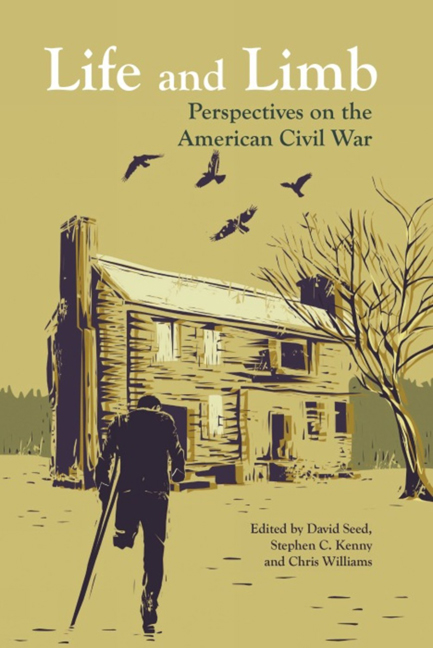Book contents
- Frontmatter
- Contents
- List of Illustrations
- Acknowledgements
- Introduction: Civil War Voices and Views
- MEDICAL AND SURGICAL MEMOIRS
- ACCOUNTS OF NURSING
- With the US Sanitary Commission: On the Hospital Boat Wilson Small: The Other Side of War
- Evacuation from Virginia, 1862: Hospital Transports
- Hospital Routine
- A Death in the Ward: Hospital Sketches
- Nurse and Spy: Nurse and Spy in the Union Army
- Front-line Nursing: Reminiscences of My Life in Camp
- ‘The Mute Look that Rolls and Moves’: Walt Whitman's Civil War
- Specimen Days & Collect
- MEDICAL FACILITIES AND PATHOLOGY
- PHOTOGRAPHY
- AMPUTATIONS AND PROSTHETIC LIMBS
- IN THE FIELD OF BATTLE
- POST-WAR NARRATIVES
- Contributors
- Select Bibliography
- Index
- Plates
Evacuation from Virginia, 1862: Hospital Transports
from ACCOUNTS OF NURSING
- Frontmatter
- Contents
- List of Illustrations
- Acknowledgements
- Introduction: Civil War Voices and Views
- MEDICAL AND SURGICAL MEMOIRS
- ACCOUNTS OF NURSING
- With the US Sanitary Commission: On the Hospital Boat Wilson Small: The Other Side of War
- Evacuation from Virginia, 1862: Hospital Transports
- Hospital Routine
- A Death in the Ward: Hospital Sketches
- Nurse and Spy: Nurse and Spy in the Union Army
- Front-line Nursing: Reminiscences of My Life in Camp
- ‘The Mute Look that Rolls and Moves’: Walt Whitman's Civil War
- Specimen Days & Collect
- MEDICAL FACILITIES AND PATHOLOGY
- PHOTOGRAPHY
- AMPUTATIONS AND PROSTHETIC LIMBS
- IN THE FIELD OF BATTLE
- POST-WAR NARRATIVES
- Contributors
- Select Bibliography
- Index
- Plates
Summary
Frederick Law Olmsted (1822–1903) was the designer of Central Park in New York and other parks in the United States. During the war he served as leader of the Sanitary Commission. The following is from Olmsted's Hospital Transports. A Memoir of the Embarkation of the Sick and Wounded from the Peninsula of Virginia in the Summer of 1862 (Boston: Ticknor and Fields, 1863).
The Spaulding is bunked in every hole and corner, and is a most inconvenient ship for carrying sick men, everything above decks running to first-classing, and everything below to steerage. The last hundred patients were put on board, to relieve the over-crowded shore hospital, late last night. Though these night scenes on the hospital ships are part of our daily living, a fresh eye would find them dramatic. We are awakened in the dead of night by a sharp steam-whistle, and soon after feel ourselves clawed by the little tugs on either side of our big ship – and at once the process of taking on hundreds of men, many of them crazed with fever, begins. There's the bringing of the stretchers up the side ladder between the two boats, the stopping at the head of it, where the names and home addresses of all who can speak are written down, and their knapsacks and little treasures numbered and stacked; – then the placing of the stretchers on the platform, the row of anxious faces above and below decks, the lantern held over the hold, the word given to ‘Lower!’ the slow-moving ropes and pulleys, the arrival at the bottom, the turning down of the anxious faces, the lifting out of the sick man, and the lifting him into his bed; – and then the sudden change from cold, hunger, and friendlessness, to positive comfort and satisfaction, winding up with his invariable verdict – if he can speak – ‘This is just like home!’
- Type
- Chapter
- Information
- Life and LimbPerspectives on the American Civil War, pp. 21Publisher: Liverpool University PressPrint publication year: 2015



